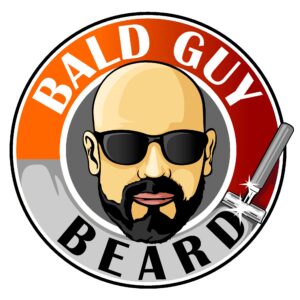Which is better dermaplaning vs microdermabrasion? Let’s discuss the two options and how they compare for inclusion as part of a man’s skincare regimen.
| Dermaplaning | Microdermabrasion | |
| Purpose | Removes dead skin cells and vellus hair (peach fuzz). Clears pores, makes it easier for lotions and moisturizers to penetrate the skin. | Exfoliates the skin to improve skin tone, deal with aging, smooth the skin and deal with light scarring. |
| Device | Dermaplaning utilizes a sterile surgical scalpel. Cleansers, serums, moisturizers, face masks and other products are used before and after the scalpel work to clean the skin. Depending on your practitioner, there could be as many as 8-10 steps involving cleansing, cleaning, massage, moisturizing and the use of the scalpel. | 2 methods: Diamond Microderm: Uses a crushed diamond-tipped vacuum suction wand to gently remove the top layer of skin. It’s now the more common and accurate method. Think of using sandpaper as an analogy. Crystal Microderm: The traditional treatment, it blasts aluminum oxide crystals onto the skin and vacuums up dirt, dead skin cells and debris. Think of sandblasting as an analogy. |
| Practitioner | A dermatologist, esthetician or other suitably qualified person. | An esthetician or other suitably qualified person. |
| Benefits | Removes the outer layer of skin, shaves off peach fuzz that can trap oil and dirt, opens pores and deals with lines and acne scars. | Removes the outer layer of your skin to give a smooth, even final look while also dealing with imperfections like sun damage, scarring, etc. |
| Skin Types | Suitable for all skin types but those with bad acne or rosacea may not be suitable candidates. If you have a skin infection, cold sores or other problem that can be passed on, you’ll have to wait until it clears up. | Suitable for all skin types but those on certain anti acne medication may not be suitable candidates. Can be suitable for those with acne or rosacea. Practitioners often suggest that 5-10 sessions may be needed to see noticeable results. |
| Frequency | No more than every 4-6 weeks. Some people may only do the process once. | Can be done as frequently as weekly although some people choose a monthly schedule depending on the specifics. Tends to be a progressive treatment that requires numerous treatments over time, as mentioned above. |

Microdermabrasion involves the use of a handheld device to gently remove and vacuum dead skin cells. There are 2 options widely used. 
Dermablading involves uses a sterile scalpel to gently shave away dead skin cells. Cleaning and moisturizing products are also used to clear the skin and pores.
Which Is Better Dermaplaning vs Microdermabrasion
It really depends on what your goal is and what you’re trying to achieve:
Dermaplaning removes vellus hair and dead skin skills in addition to offering various cleansing benefits by utilizing numerous cleaners, a face mask and moisturizers.
Microdermabrasion also removes dead skin and offers various benefits such as anti-aging treatment while dealing with scarring and sun damage. It doesn’t shave hairs nor does it offer the same level of cleansing and moisturizing as dermaplaning.
So rather than thinking of one being superior to another, understand the benefits of each and determine which one makes the most sense for you.
Conclusion
- Dermaplaning involves using a sterile scalpel to gently remove dead skin cells and vellus hairs (peach fuzz) from your face. There are also numerous cleansing phases typically involved to clear pores.
- Microdermabrasion involves using a handheld device (2 options described above in the table) to remove dead skin cells and assist with aging, scarring and sun damage.
- Dermaplaning can be done every 4-6 weeks if needed whereas microdermabrasion can be done as frequently as every week if desired.
- Check with your chosen practitioner to see which option makes sense for you given your specific needs and what your best frequency of treatment is.
- You may also consider a facial if you’re looking for less intensive face skincare option.
Have you had a microdermabrasion and/or dermaplaning treatment? Let us know in the comments below!


